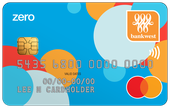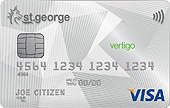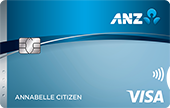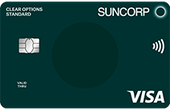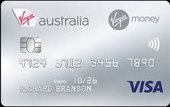Want to know more about what a balance transfer credit card is and how it works? Here's what you need to know.
What is a credit card balance transfer?
A credit card balance transfer occurs when an amount of debt is transferred from an existing credit card, charge card, or store card to another card held by the same cardholder. In theory, most Australian credit cards are balance transfer credit cards, although some cards specifically exclude a balance transfer option. Where balance transfers are allowed, in the absence of an introductory interest rate offer the transferred balance immediately begins to incur interest charges at the card’s purchases or cash advance interest rate.
Most references to a balance transfer credit card assume that the card receiving the transferred balance has a special introductory offer of a zero or very low interest rate on the transferred balance for a specified period, usually between six and 24 months, occasionally longer.
What is a balance transfer credit card offer?
A balance transfer credit card allows cardholders to consolidate debts by moving existing balances to one card, often benefiting from a lower promotional interest rate. These are the defining features of a typical balance transfer credit card offer.
- Introductory balance transfer rate. A promotional low or 0% interest rate offered to new cardholders for a set period.
- Introductory balance transfer period. The duration the promotional rate applies, ranging from several months to over two years. After this, the revert rate kicks in.
- Balance transfer fee. A one-time charge, often a percentage of the transferred amount, for executing the balance transfer.
- Revert rate. The interest rate applied to any remaining balance post the introductory period, typically higher than the promotional rate.
What is the difference between a credit card and a balance transfer card?
In essence, all balance transfer cards are credit cards, but not all credit cards offer balance transfer features.
A credit card is a type of payment card issued by a bank that allows you to borrow money up to a certain limit to make purchases. You then pay back the borrowed amount, with interest if not paid in full by the due date.
A balance transfer card is a specific type of credit card specifically designed to help you move and consolidate debts. It lets you transfer the balance from one or more existing credit cards to this new card, often with a lower or even 0% interest rate for a set period. Used properly, this can help you save on interest and pay off debt faster.
How does a balance transfer work?
A balance transfer is nothing new — they've been around since before we started comparing credit cards — and is quite a simple process you can do yourself. If this is your first time transferring a balance, here's how it works.
The balance transfer process
- Compare offers and pick a card. At any given time, many of Australia's main banks will have a balance transfer offer. You can compare many of them in the table above. Note that you cannot balance transfer between cards with the same bank.
- Check you are eligible. Make sure you earn enough, have a good enough credit score, and meet the minimum criteria.
- Apply. This is when you'll provide details on the balance transfer. You'll also need your ID. The bank may also require some additional proof of income such as a bank statement or recent payslip. The fastest and most convenient way to apply is online.
- Activate your new card. Some banks will not carry out the balance transfer until your card has been activated.
- Transfer. The new credit card company pays off the amount of balance specified on your old card. This amount then appears as a debt on your new card.
- Repayment. You start making repayments on the new card, ideally benefiting from the lower interest rate. This means more of your payment goes towards reducing the principal amount rather than just covering interest.
- Decide what to do with your old card. There are pros and cons for closing or keeping it open. You don't have to close old cards, but it can save on annual fees and helps you from overspending.
- End of introductory offer. Once the promotional period ends, any remaining balance will start accruing interest at the card's standard rate. It's beneficial to pay off the transferred amount before this happens.
How much do credit card balance transfers cost?
The cost of a credit card balance transfer primarily depends on the balance transfer fee, if any, imposed by the card issuer.
This fee is usually a percentage of the amount being transferred. For instance, a 3% fee on a $5,000 transfer would cost $150.
Most banks offer the choice of adding the fee to the balance or paying it up front.
What debt can be consolidated with a credit card balance transfer?
Balance transfers aren't just for credit card debt, although what can be transferred to a credit card varies between issuers.
- Buy Now Pay Later to credit card balance transfers (Afterpay and Zip) are possible with a select few cards.
- Overseas credit card balance transfers to an Australian credit card are not possible.
- Personal loan to credit card balance transfers are possible with a few cards, mostly those issued by Citi.
- Personal overdraft to credit card balance transfers are not possible.
- Store card to credit card balance transfers are widely accepted and treated like a credit card to credit card balance transfer.
How much can you transfer to a single card?
The amount you can transfer is typically determined by the balance transfer limit of the new card, which is typically a percentage of the card's overall credit limit. For example, if your new card has a credit limit of $10,000 and a balance transfer limit of 90%, you can transfer up to $9,000.
Some banks specify a fixed dollar amount as their balance transfer limit, but this is relatively uncommon these days.
If you need to transfer a large amount and are in doubt about a card's suitability, it's important to check limits before applying. You might also want to check out these credit cards with high credit limits.
When do you find out what your maximum credit limit is?
Once your credit card application has been processed and approved, the issuer will inform you of your credit limit on the approval letter or email.
This unfortunately means it may be possible that the credit limit — and therefore the balance transfer limit — is lower than what you need.
Several factors determine what the credit limit will be, including your credit history, income, existing debts, and your overall ability to repay.
How long does a credit card balance transfer take?
How long a balance transfer takes varies between banks and can take between 5 to 15 business days to complete. Once you request a balance transfer, the new card issuer will communicate with the old card issuer to move the funds.
It's crucial to continue making payments on the old card until the transfer is confirmed to avoid late fees or damaging your credit score.
How much money can a balance transfer save?
Savings can be significant if you manage to repay the balance within the interest-free or low-interest introductory period.
However, the amount you can save using a credit card balance transfer depends on the introductory interest rate, introductory offer length, and how quickly you repay your debt.
Example: 0% balance transfer card vs paying off your current card
- Balance transferred: $5,000
- Current interest rate: 20% p.a.
- Introductory balance transfer rate: 0% p.a.
- Introductory balance transfer period: 6 months
- Monthly minimum repayment: 2%
- Amount saved: $495.44 (or $395.44 if you had to pay a 2% balance transfer fee)
Can anyone do a credit card balance transfer?
There are balance transfer credit card eligibility criteria and conditions to take into consideration, meaning not everyone may be eligible. As the bare minimum, you'll need a good credit score and a specified minimum income to qualify.
- Your own credit card debt. With a solid credit score and consistent income, you can apply for a balance transfer. The key is aligning with the issuer's requirements, which is why it's so important to check before applying.
- Between family and friends. Few issuers support balance transfers from another person's card to yours. If you choose this route, ensure both parties understand the repayment terms and credit score implications.
- Overseas debt. None of the banks will transfer debt from a foreign card to an Australian one or vice versa. If you have overseas debts, consider alternatives like personal loans.
- Existing customers. If you already hold multiple credit cards, you might be able to transfer a balance between them. However, balance transfers for existing customers typically aren't anywhere near as competitive as those for new customers. While the rates might be higher, the upside is you avoid the hassle and potential credit score impact of applying for a new card, which might not even get approved.
- Business balance transfers. If a business credit card have a balance transfer offer, it's usually much less competitive or long-term as personal card offers.
What is the best balance transfer credit card?
There is no single "best" balance transfer credit card that will suit everybody's individual financial circumstances. These are the characteristics of a good balance transfer credit card, which you can compare to find the best balance transfer credit card for your needs.
- A low interest rate on balance transfers. The obvious attraction of a balance transfer card is that it allows you to save a large amount of money by avoiding high interest charges on existing credit card debt for a prolonged period. This is particularly beneficial if the debt is sitting on a card with an interest rate of 20% p.a. or more, before being transferred. Most balance transfer credit cards in Australia have a 0% p.a. introductory rate.
- A long introductory period. The basic rule of thumb is that the longer the introductory period is, the better. When combined with a low interest rate, you can use the introductory period to save more money and get out of debt.
- A low or no balance transfer fee. Some balance transfer offers come with a fee attached, a fee payable upfront as a credit establishment or processing fee. If a fee is charged, it is typically 1% or 2% of the amount being transferred. So if you’re transferring a balance of, say, $10,000, and the balance transfer fee is 1%, you’ll pay a $100 fee.
- A low revert rate. It’s a good idea to use the interest-free period on your balance transfer to pay off as much of your debt as you possibly can. That’s because you’ll start paying interest on any remaining balance, at the revert interest rate, as soon as the offer period expires. The revert interest rate will be either the card’s ongoing purchases interest rate or the even higher cash advance interest rate.
- A balance transfer limit that's high enough for you. It is not possible to balance transfer any more than your new card's credit limit. Most banks also have a limit for how much of the credit limit can be used specifically for balance transfers, known as the balance transfer limit, which can range from 70 - 100%.
- Support for your preferred transfer. Due to complexities with banking relationships, it may not be possible to transfer between the banks you prefer. Check that the card you want to apply for can balance transfer from your existing card.
- Ability to transfer non-credit card debt. Some credit card providers, including Citi, Coles, Qantas Money and Virgin Money, allow personal loan debt as well as credit, charge, and store card debt to be transferred to a balance transfer credit card. This allows you to make your debt consolidation more complete.
How to use a credit card balance transfer
Once you get an interest-free balance transfer card, there are a few things to do in order to maximise its benefits.
Things to do
- Get the balance transfer offer. If you did not request a balance transfer during the application, some cards allow you to request it after approval. However, if this is an option, it's usually for a limited period after approval.
- Use the interest-free intro period to pay off debt. Unlike a loan with fixed monthly repayments, you only have to make the minimum monthly repayment. Calculate what to pay each month so that the balance has been paid off before the introductory offer ends (our comparison table includes a calculator that does this).
- Don't spend on your new card. Do what you can to be disciplined with regards new purchases. Use the balance transfer card and it's interest-free offer to get out of debt rather than as a reprieve.
Things not to do
- Avoid applying for more than one card around the same time. Doing this can have a negative impact on your credit score since it can appear irresponsible. If it does affect your report, it can take some time for it to recover and may make it more difficult to get approved in future.
- Do not make minimum repayments only. This is one of the worst things you can do with your credit card since it means you'll carry a for longer and pay more interest.
- Don't spend on your old card. If you choose to keep your old card, avoid spending on it.
What happens after the introductory balance transfer period?
Once the balance transfer period has expired, your options depend on what balance remains.
If you've repaid the balance in full
- You're out of debt. You'll have more money left over each month, which you can use to build your wealth.
- You can the keep the card. If you don't mind paying the annual fee and won't start spending on it again, you could keep it.
- Or close it. If you want to avoid debt, then you can close the account and make additional savings because there'll be no annual fee to pay.
If you still have a balance
- The revert rate begins. Any debt that was transferred and has not been repaid will incur interest at the purchase or cash advance rate.
- You can do another balance transfer if you need to. If you still have a lot left to repay, then you could consider transferring to another card with a different bank.
Balance transfer credit card pros and cons
A balance transfer card can reduce interest, save money, and make it easier to get out of debt. However, there are benefits and drawbacks to be aware of.
Pros
- Pay less interest and save money. You can use a credit card balance transfer to reduce or eliminate interest, which means paying less each month during the introductory period.
- Free up money that can be used to get out of debt. With less money being spent on interest, you can increase what you repay to pay off the balance owed faster.
- Simplify your finances. While it's often overlooked, the ability to combine debt from several cards onto a single card with a low rate not only makes it cheaper, but also easier and less stressful to manage.
Cons
- The balance transfer fee. If charged, this one-off fee means having to pay around 2 - 3% of the amount being transferred. That may not matter much for small balance transfers, but if you are transferring a lot, it can add up.
- High interest after the introductory period ends. When the introductory period is over, any balance left will attract interest at the purchase or cash advance rate.
- Your new card's credit limit may not be enough to transfer everything across. Furthermore, you won't know what that credit limit is before applying.
- 0% introductory offers are for new customers only.
- You may use the card to spend with. Doing so means you may end up with more debt.
Balance transfer credit card alternatives
A balance transfer credit card isn't the only solution to eliminating your debt. You can also consider the following alternatives:
- Debt consolidation loan. A debt consolidation loan transfers multiple existing loans to a different lender. These loan products may have attractive repayment terms such as a lower interest rate and lower monthly payments. However, closing old accounts can reduce your credit score by reducing your credit mix.
- Home loan refinance. If you have substantial equity in your home (that is, its market value is higher than the amount you owe on your home loan) you can release some of that equity as cash by refinancing your home for a larger amount and possibly a lower interest rate or longer term. You could then use the surplus cash to pay off high-interest debt like credit cards. But be aware that you are converting short-term debt into long-term debt.

